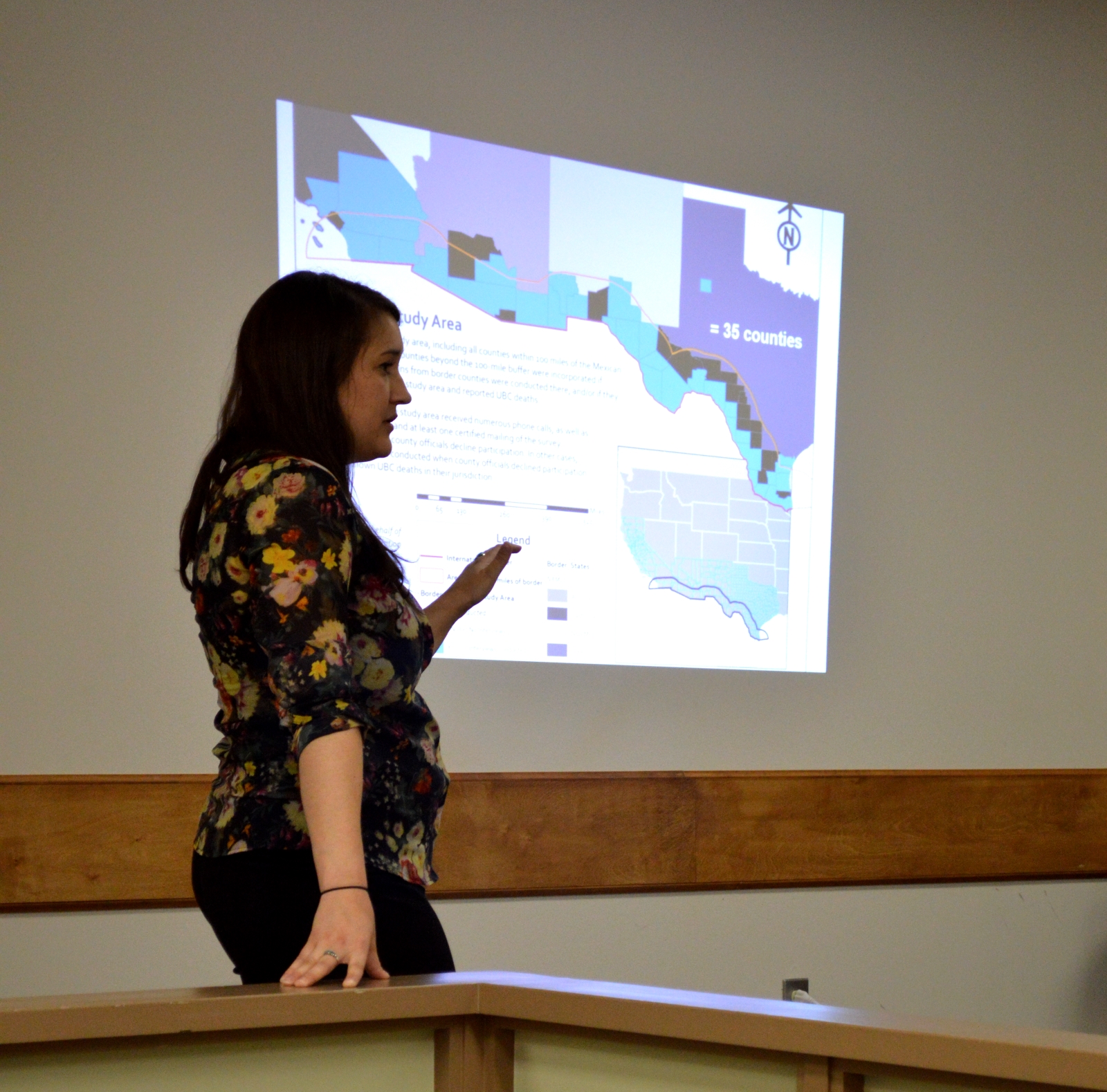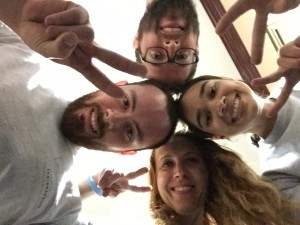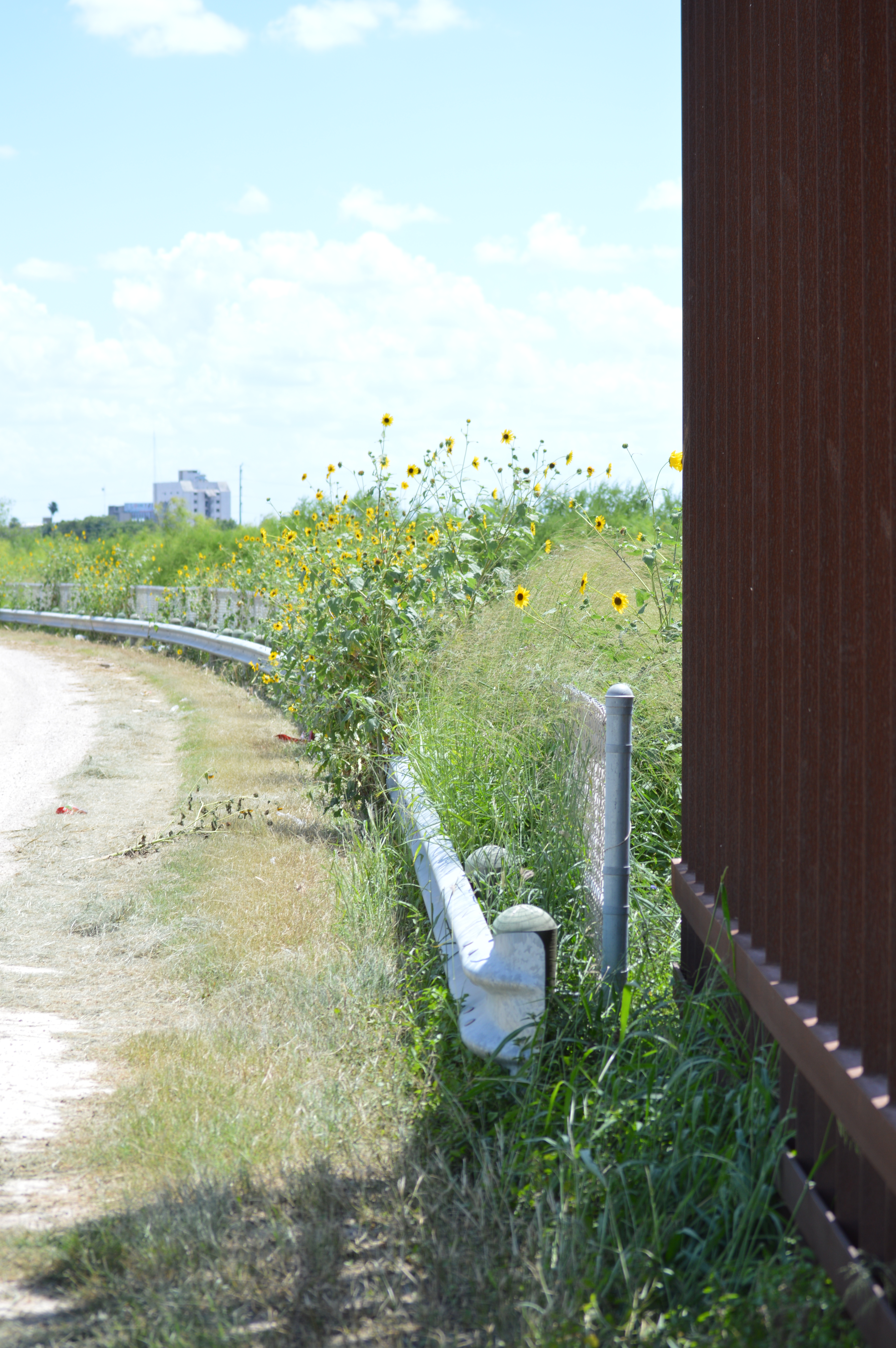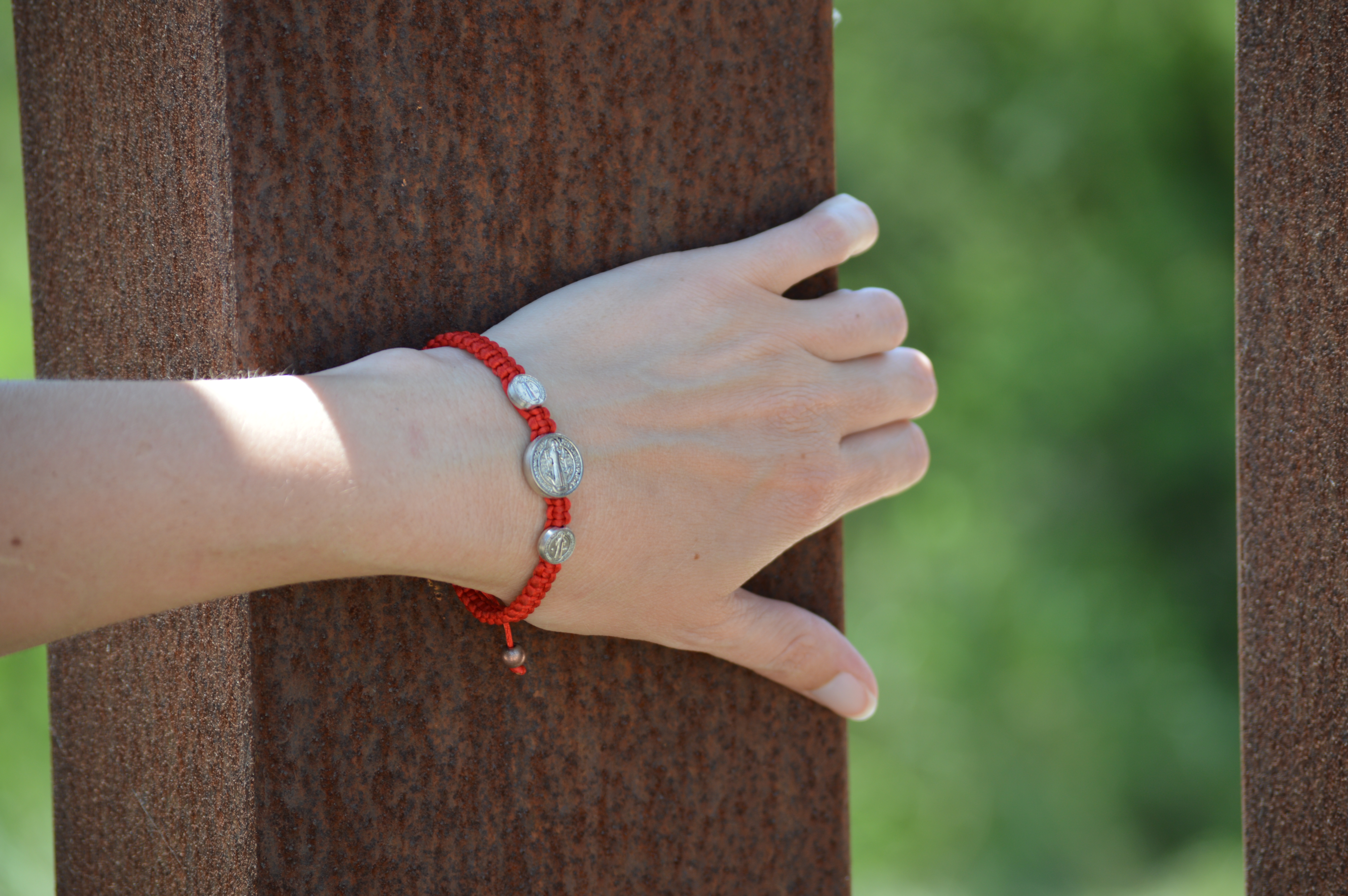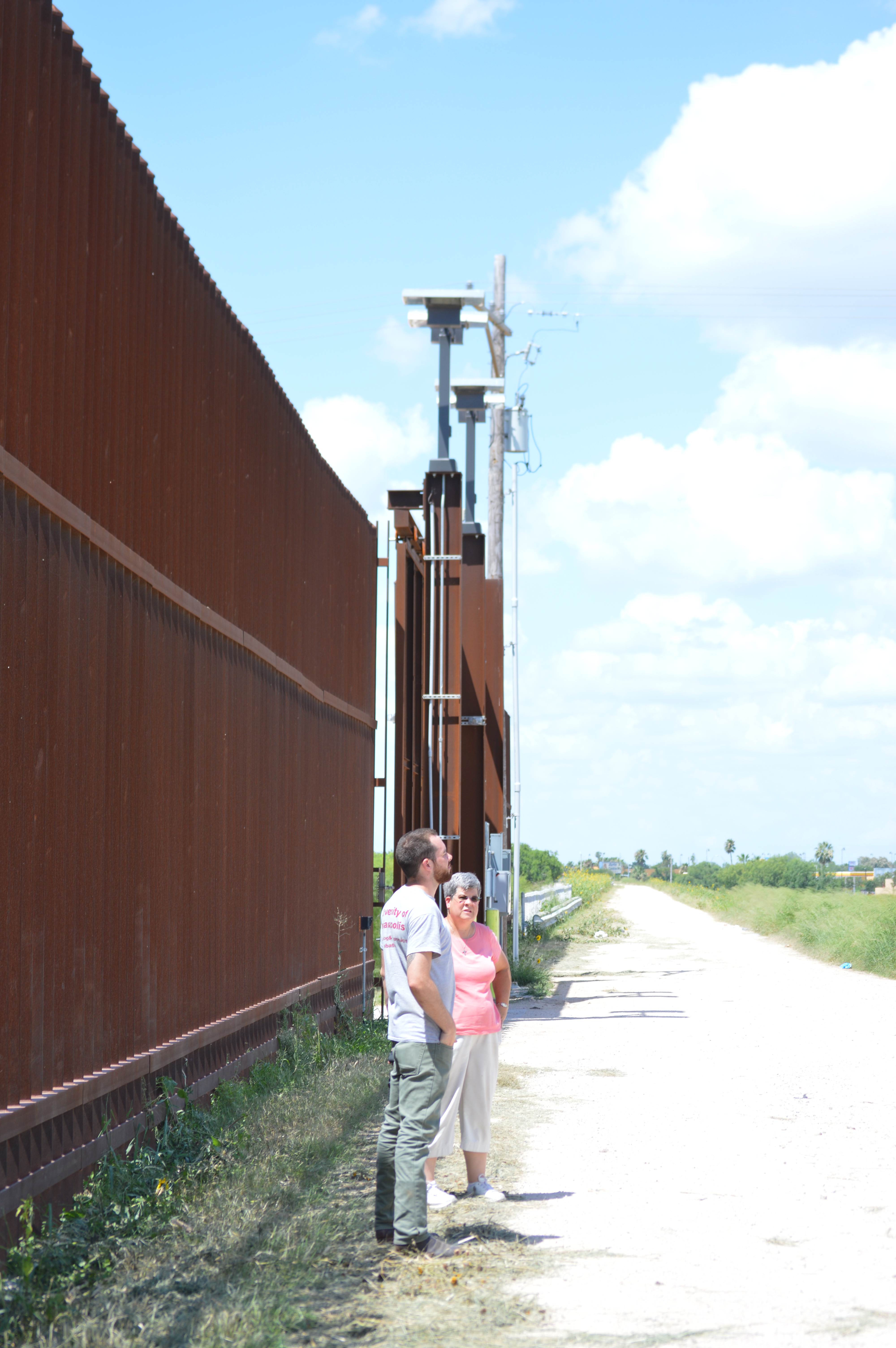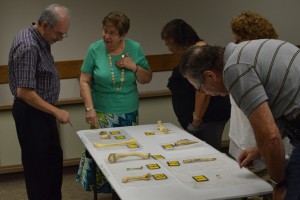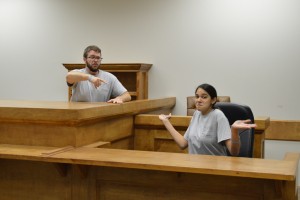“Here’s the spreadsheet that has all the details for this year’s missing persons reports.”
Dates of last known contact, what clothing they were likely wearing, whether there was any history of dental work or surgeries, and other possibly identifying information filled cells of the spreadsheet. There was a lot of data, but question marks and blank cells for missing data easily stood out. I wasn’t really sure how to process the data. Where do you start? How do you start looking for connections?
“Oh no, these are just the reports from the Brooks County Sheriff’s Office. We’ll get to the other counties and all of the other reports sent to us from other states in a minute.”
Hailey Duecker, the forensic anthropology fellow at the South Texas Human Rights Center, pulled up a current missing persons case she was working on to walk me through the process of search and rescue/recovery that begins with a phone call from family or friends of the missing. This particular report was written entirely in Spanish.
“We got lucky with this one. Two separate organizations have information about this missing person, and so we have a lot of photos and a lot more information than we normally have about someone.” Hailey showed me the photos and explained how she inputs this data into a public database called NamUs, the National Missing and Unidentified Persons System. “If we’re really lucky, we’ll have a few possible matches with unidentified persons found here in Texas.”
It seemed simple enough. A family calls in, reports a loved one as missing, gives as much information as possible, promises to submit a reference sample for DNA comparisons, and the South Texas Human Rights Center makes sure the data can be compared with other cases. But what I learned today was that this ‘simple’ process actually takes months and months of painstaking organization, persistence and patience to complete. Multiple human rights organizations strive to collect as much information as possible to find the missing, which in spirit is incredible. At this point however, as Hailey is able to quickly show me, these intentions often lead to decentralization. This means that multiple missing persons reports often exist for the same individual, often with conflicting information. And when one missing person is assigned a different case number by each organization or agency, these multiple numbers can easily get mixed up, creating a tangled web of useful information.
While this sounds like a problem, I see this as an opportunity to learn and become immersed in each individual case, and I think Hailey does too. As I spend this week learning as much as I can from Hailey before transitioning into her position, I’m realizing our job is a tedious one as we condense and clean an extremely large dataset into something more suitable for making comparisons. Even after only a single day of working with her, we started to fill in the blanks on a few cases, make a few comparisons, and equally if not more importantly, make some exclusions. I felt both a sense of relief and urgency with each blank cell on that spreadsheet that we filled in.
“I think we can exclude this set of remains as belonging to this missing person because the remains were found a few days before the date that he was last seen. That’s really good news, really good news.” Hailey spoke with excitement and passion every time she talked about getting one tiny step closer towards an identification. “Look further down this spreadsheet here, you can see how some of these missing persons turned out to be people who were deported. They’re alive, and that’s always the best news.”
Dr. Latham eyed us looking over the spreadsheet, probably because Hailey was flying through the explanations with excitement. She definitely sensed my head spinning.
“What do you think Ryan, you think you can handle it?”
I definitely think I can. Today was an eye opener for me that this week of training is going to be an emotionally exhaustive experience that throws me out of my comfort zone. But that’s what this trip is about, and I’ve never felt more ready for this job than after today.
